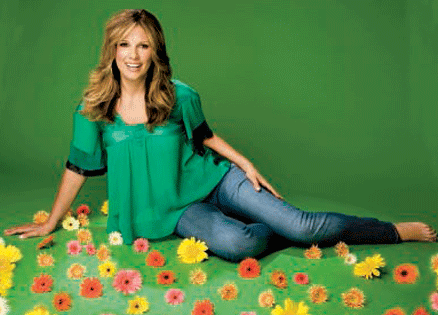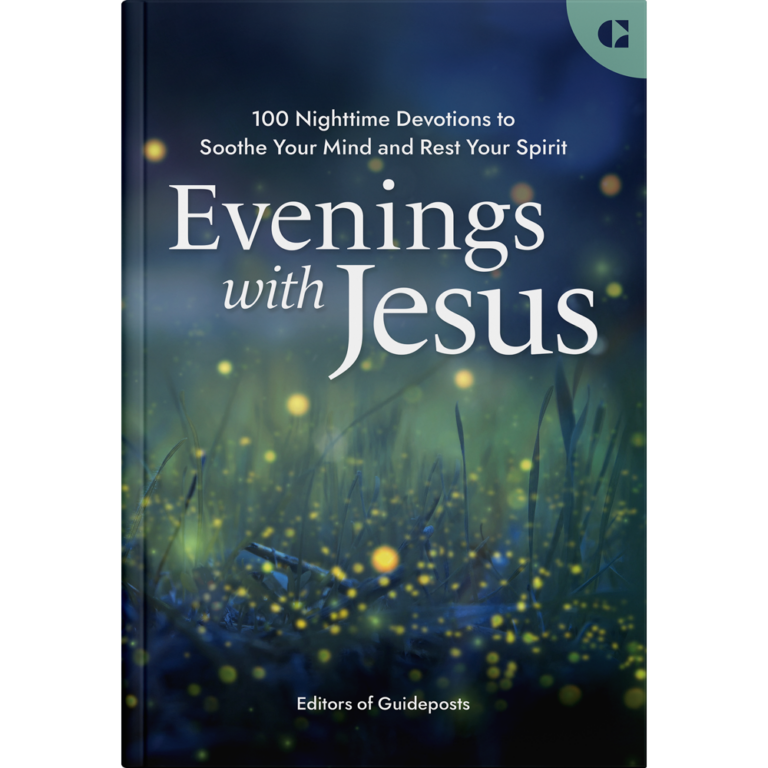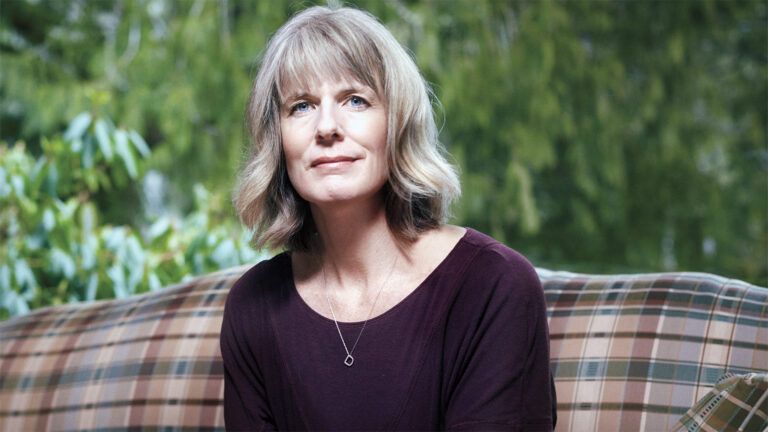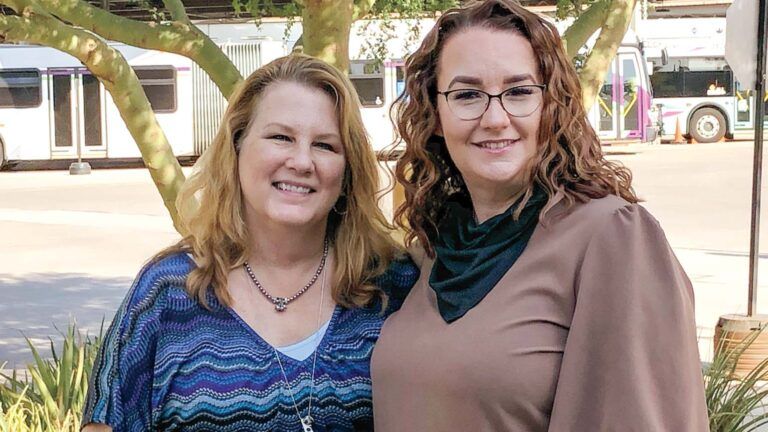The letter came in a stack of mail. There was a photo included, a picture of a teenage girl with sparkling eyes, shiny hair and a confident smile. I didn’t recognize her. Probably someone who wanted advice on how to get into modeling or television. She was certainly beautiful enough to be a model.
Then I saw the name at the end of the letter: Jessica. And I knew immediately who she was.
“We met at St. Jude five years ago,” she wrote.
Not that I could have ever forgotten that wonderful place that had made such a difference to both of us.
Actress Marlo Thomas was the one who first got me involved. She asked if I would come to a fund-raiser in Los Angeles for St. Jude Children’s Research Hospital.
“Sure,” I said. I’d heard about St. Jude and the good work the doctors and nurses and the rest of the staff there did for children with catastrophic diseases, and I was glad to help in my own small way.
I’d heard the story behind the hospital too, how when Marlo’s father, actor Danny Thomas, was struggling to make it in the entertainment business he promised God that if success ever came his way he’d do something for the weakest of the weak, the poorest of the poor, children with diseases that seemed impossible to cure.
Like Marlo, I’d grown up Catholic and I understood why St. Jude’s name was invoked. My mother made sure faith in God was a part of our lives, and we kids were taught to remember St. Jude in our prayers at those times when there didn’t seem to be any hope, because he was the patron saint of lost causes.
Success came for Danny Thomas—Make Room for Daddy was one of the most popular TV shows of the fifties. He never forgot his promise, and started the Memphis-based hospital that has become a center for pediatric research and care, treating children regardless of whether their families can afford it. A place of hope.
The L.A. fund-raiser was a big success. That was that, I thought. But Marlo had another request—one that sounded a lot more daunting. “Come to the hospital and meet the kids,” she said. “You’ll love them and they’ll love you.”
“I don’t know,” I said hesitantly. I knew fashion, beauty, fitness and music, not medicine. Not what these desperately ill children needed. What could I really do for them?
Marlo must have heard the doubt in my voice because she said, “There’s a lot you can do to help the kids. You’ll see. Talking to them, just being with them, makes a big difference.”
Just being with them. Those words clicked with me. I remembered just being with someone who was very sick, whose illness shook my world—my mom, when she had breast cancer.
My parents were very traditional and my mom was the glue in the family, the one who took care of all of us and kept everything together. I was born in Cuba. When I was three our family moved to Spain. Like most women in Spain back then, Mom didn’t work outside the home.
My little sister and I were so blessed to have her close at hand, playing with us, reading to us, teaching us how to cook Cuban comfort food like picadillo (still one of my favorites). Now I realize my parents were struggling financially, but I remember it as a happy time. We did a lot with very little. We were always out and about, exploring Madrid, having picnics, walking around the beautiful squares, or plazas, that the city is known for.
When I was eight we moved to New Jersey. All at once I was the new kid, the odd one out. There were some Latino kids in school but they couldn’t understand my Castilian Spanish accent. They made fun of me for having a lisp when really I was pronouncing z’s, like in the word zapatos (shoes), with a Castilian “th” sound. I quickly toned down my accent to fit in.
And I learned English. I picked it up fast watching I Love Lucy. (I can still do a pretty good imitation of Desi Arnaz declaring, “Lucy, I’m home!”) One spring day I even discovered my name meant something in English. I was walking home from school and a friend pointed to a white and yellow flower. “Look at that pretty daisy,” she said.
“What did you call it?” I asked.
“Daisy, like your name,” she said.
I raced home and said, “Mami, you never told me I was named for a flower!” She had no idea. In Spanish, Daisy is a girl’s name, not a flower.
When it came to rules and discipline, my dad was very old world, very strict. Date in high school? Not us Fuentes girls. No way. I couldn’t get my dad to let me go to the movies with a boy even if my sister came along as a chaperone. My dad’s philosophy was, if a boy really liked me, he could come over and sit on our front steps and talk to me. And believe me, if the poor kid overstayed his welcome, Dad would march out and say, “Good night, son.” Time to go!
I was 19, living at home, doing some modeling and just starting to get into TV work when Mom had a routine checkup and told me she’d found a lump in her breast. “The doctor doesn’t think it’s anything serious,” she said.
Breast cancer wasn’t talked about so openly back then, but I knew enough to be concerned, especially since she was only 39.
“Mami, you need to go to a specialist so we can know for sure,” I said.
“I was thinking the very same thing,” she said.
She went to a specialist and got a biopsy. I was home when the doctor called with the results. Mom hung up and told me, “It’s cancer.”
I’d never seen my mother, who handled everything that came our family’s way so capably, look so scared and helpless. “You’ll be okay,” I said, even though I wasn’t at all sure.
We told Dad when he got home from work. He tried to be strong but he couldn’t hide the fact that he was terribly frightened.
Mom put on a brave front. “The doctor said we caught it really early. All I’ll need is a lumpectomy and some radiation treatments.”
What do you do when the ground beneath you is shaken? How do you find your footing again? That year I learned. I was an adult, starting my career, but one of life’s most important lessons still came from my parents. We met our fear with faith in God and in each other. We got through the crisis by praying and sticking together.
Mom’s radiation treatments were at a hospital in New York, so we made each trip into the city a family outing. We’d go to lunch, do a little window shopping, take a walk in Central Park, like we used to in the plazas of Madrid.
The treatments took a lot out of her. “Rest, Mami, rest,” my sister and I told her. “We’ll do the chores.” She wouldn’t let us take over the cooking, but we did all of the cleaning—dusting, mopping, vacuuming, laundry. Those little things were a way to give each other hope, to remind our mother that we were all in this together.
The treatments worked. Mom’s cancer went into remission and didn’t recur. Even though the crisis passed, I still remembered how important it was to just be with my mom when she was sick. I couldn’t make her well, I couldn’t take her fear away, but I could sit with her in the radiology waiting room. I didn’t even have to say anything. It was enough for her to know she wasn’t alone.
Just being with someone who was sick. Wasn’t that what Marlo Thomas was asking me to do? My hesitancy faded. “Of course,” I told Marlo. “I’ll come to St. Jude.”
Marlo was right. I loved being with the kids. We talked and played games, drew pictures and read stories. Sometimes it was hard to hold on to hope, especially when I found out how serious their diseases were. There was one girl, a nine-year-old with acute lymphoblastic leukemia, her hair all gone from chemotherapy, but she didn’t let any of that get in the way of her bubbly personality. She took my hand and introduced me to her stuffed animals and told me about all of her friends. She giggled a lot and I found myself laughing too. That was Jessica.
I hugged her goodbye knowing that I might never see her again, the odds seemed so stacked against her. But then those are exactly the sort of odds the people at St. Jude aren’t afraid to take on. Kids get not only the best medical treatment available, they also get a good dose of courage and hope and friendship and laughter. Lost causes? Not at St. Jude. And I am grateful to be a part of what they do.
Now I looked at the picture Jessica sent me. She was glowing with health, her outward appearance reflecting the radiant inner spirit I’d seen when I met her five years earlier. “I will never forget your visit,” Jessica wrote.
Neither will I.
Download your FREE ebook, The Power of Hope: 7 Inspirational Stories of People Rediscovering Faith, Hope and Love






